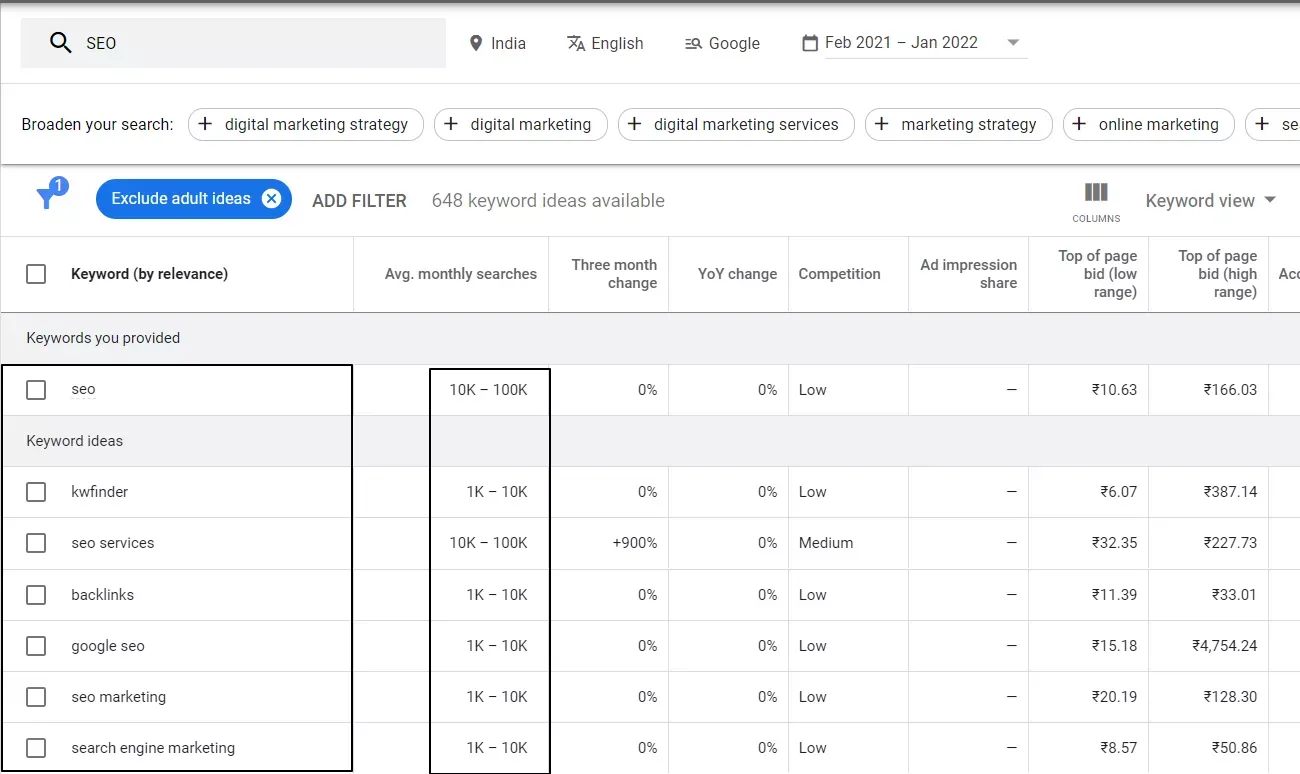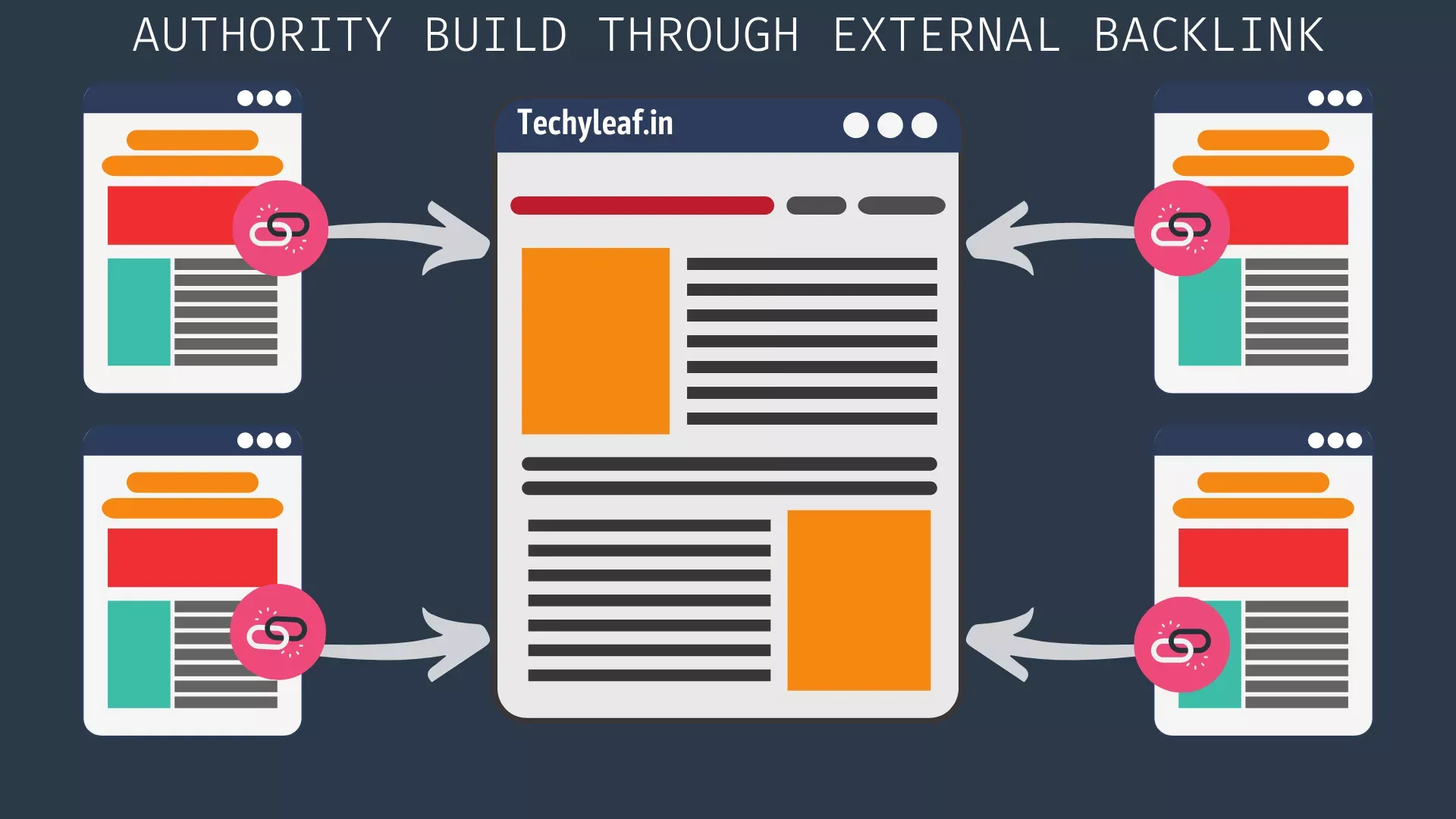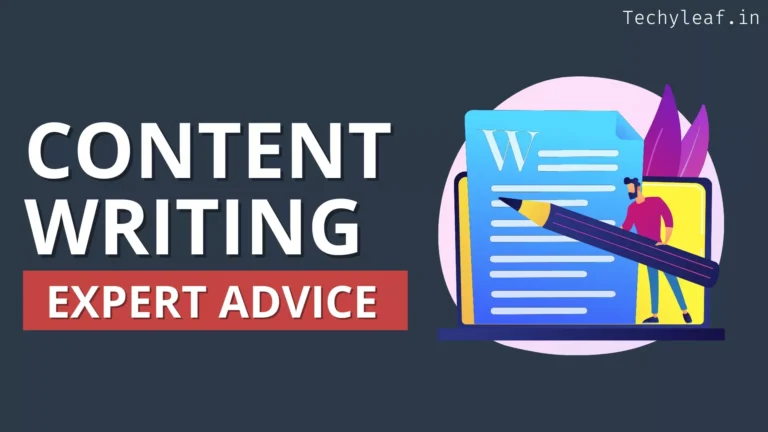SEO for Beginners: What is SEO? How does SEO work?

If you are looking to improve your search engine optimization (SEO) and drive more traffic to your website, this article will provide you with the basics of SEO.
If you have heard of SEO, but have no idea what it actually means or how it works, this guide will teach you all about it.
From understanding why people use search engines to find information to learn the importance of meta tags, keyword research, and on-page and off-page SEO factors – this article has everything you need to know about SEO for beginners! Let’s start!
What is SEO?
Search engine optimization (or SEO) refers to techniques webmasters use to increase traffic from search engines. Most of us probably know that already, but we might not understand how it works or why it’s important.
Search engines like Google receive an enormous amount of data every second; imagine if they just displayed all of that information in list form. Rather than trying to do everything manually, search engines use automated programs called spiders or bots to crawl through website content and index only what they think is important enough for you to see.
The question becomes how do we ensure our site is relevant enough so that spiders/bots want to crawl through our pages? That’s where SEO comes in!
Search engines like Google want to help users find what they’re looking for, so search engine optimization has evolved from simply tweaking a few settings on your site to making sure it actually answers user intent and isn’t duplicating content.
When a search engine sees your website, one of its first steps is to determine if you are relevant enough in relation to other websites for users searching that topic. If it decides you are, then it will index your website – which essentially means recording information about your website.
One of your jobs as a webmaster or business owner is to ensure that search engines are able to find and index your content – otherwise, you’re missing out on traffic. Search engine optimization (or SEO) is a set of techniques designed to help websites achieve that goal.
Why you should pay attention to SEO
If you’re just starting a website, or even if you’ve been at it for a while, chances are good that search engine optimization (SEO) was not high on your list of priorities. But, just as your site needs regular maintenance and updates to keep things running smoothly, it also needs proper optimization in order to function at its best—and getting started with SEO can save you from falling behind on ranking factors. Here’s a look at why you should put attention to SEO.
Many people think of search engine optimization as something that only bloggers need to pay attention to, and in a way, they’re right. However, if you want visitors—and especially potential clients—to be able to find your site on a search engine, you do need to optimize your site properly. Otherwise, you run the risk of losing out on business and potential leads because search engines can’t find your website when someone searches for relevant keywords or phrases.
When it comes to search engine optimization, there are a number of different factors that you need to be aware of. The first of these is your site’s indexing status with search engines like Google, Bing, and Yahoo.
Indexing refers to whether or not your website has been properly set up so that a search engine can find all its pages when someone looks them up in a search query; if they can’t find anything—or at least enough—they might not show your website in their results at all.
How does SEO work?
How does search engine optimization (SEO) actually work, you ask? It’s actually a fairly simple process that can be broken down into four steps.
The first step, of course, is researching keywords. In any given industry, there are words and phrases that people type into search engines to find information about products or services they want. Learning what these are can help your website get found in search results. Let’s take search engine optimization experts as an example keyword.
After you’ve done keyword research, it’s time to move on to Step 2: On-page optimization.
On-page optimization involves writing content that uses those keywords naturally, and in a way that helps search engines understand what your site is about.
The final two steps of search engine optimization are off-page optimization and ongoing maintenance. This can be more complex than on-page or technical optimization, so we’ll cover it in a future post. For now, just know that off-page optimization involves getting links from other websites that point to your website.
Types of SEO
The most basic types of SEO include On-Page optimization, which refers to what you can do to your website from within. This includes everything from optimizing titles and meta descriptions to making sure you’re targeting relevant keywords in your content and links. Off-Page optimization concerns everything that happens outside of your website and how others relate to it. This includes things like social media sharing and backlinks.
On-Page SEO
The easier it is for a search engine to understand your content, the better. In other words, if Google can’t easily parse what you’re trying to say and how you want to rank in search results, there’s a good chance you won’t appear.
As a result, you’ll want to pay special attention to your meta title tags. Write short, unique, and descriptive titles. Keep them under 70 characters (about two or three sentences) so they appear properly in search results and don’t get cut off.
Use keywords sparingly; every time you use a keyword in your title tag, it weakens its effectiveness because it tells Google that you care more about ranking than communicating what your content is about.
After meta titles, you should also give a serious look at your URLs. Try to make them readable and descriptive so they can help Google understand what each page on your site is about.
It’s also a good idea to consider your image alt tags as part of your on-page SEO strategy. Alt tags are an opportunity to include additional information that search engines can understand and use, but don’t make these keywords stuffed, either—two or three should do.
To finish up your on-page strategy, you’ll want to ensure that your content is properly formatted. Paragraphs should be short and to-the-point; use bullet points when appropriate. If you’re dealing with charts or infographics, it may be best to include a caption along with it so search engines have a better understanding of what they are trying to represent.
Linking out can also help search engines understand your content better; however, make sure these links are relevant and trustworthy—search engines know not all links are created equal.
Lastly, you’ll want to consider your usage of keywords. Put them in your URL and image alt tags, as well as strategically throughout your content. The most important thing to remember here is not to overdo it—this isn’t 1998 and search engines are much smarter now than they were back then.
Off-page SEO
The off-page elements of SEO are external links that point to your website, and they can come from many different places. The first type of link is your backlinks or inbound links. These are links that point to your website from other websites on which you’ve earned a mention. This kind of SEO is important because it helps increase your site’s relevance in search results.
The second type of link is your outgoing links. These are external links on your website that point to other websites. They also help increase relevancy, but unlike backlinks, they don’t boost your rank in search results. They simply act as a reference point to inform web crawlers what other websites are relevant to your own site.
The final type of link is your internal links. These are when you include links from one page on your website to another page. This helps web crawlers easily navigate your site and understand its structure, but it doesn’t increase relevancy like backlinks or help you rank higher in search results as outgoing links do. In fact, if you have too many internal links without enough backlinks or outgoing links, it can actually hurt your rankings.
Technical SEO
The basic idea behind technical SEO is to make sure your site’s code (HTML, CSS) contains all of the pieces that search engines need to index your content and rank it in their results. This includes things like title tags, meta descriptions, header tags, and internal links—all of which provide important cues to a search engine about what a page contains.
If you’re having technical issues with crawling and indexing, try looking into your site’s robots.txt file—which should be placed in its root directory. As a tool, robots.txt allows you to specify what parts of your site should be crawled and indexed and which should not, helping to eliminate issues before they happen.
This page should also be set to Allow crawling and indexing. If you want search engines to follow links on your site, it will also need to allow them. For example, if you have a site that uses WordPress as its CMS (content management system), you’ll find an option to manage its robots.txt file using SEO plugins like RankMath, Yoast SEO, etc.
Another important item in your technical SEO checklist is to check whether your site has a Sitemap file. XML SiteMap files give search engines a clear view of all pages on your site, and Google recommends using it if you have more than a few hundred pages. XML Sitemaps are relatively easy to create and can be generated through tools like Yoast’s WordPress plugin Rankmath SEO plugin.
If you are using Blogger then the XML sitemap will create automatically and you can submit it in the search console by going to sitemap and entering the website URL like this. (https://example.com/sitemap.xml)
You can also use an HTML sitemap on your website, which helps search engines as well as users to navigate your website properly.
The final thing you’ll want to check in your technical SEO checklist is whether your pages have been indexed correctly. If you find that a page isn’t showing up in search engines, it might be because of duplicate content issues.
It’s important to make sure that each page on your site only contains one copy of a piece of content, otherwise, search engines will start indexing it multiple times and seeing multiple versions as separate pages.
Learn the complete steps to fix crawling & indexing issues on the website.
Keyword Research
In short, keyword research is determining which search terms will get you noticed by your target audience. You may have a brilliant product or service to offer, but if you don’t market it to people looking for what you’re selling, they won’t find it.
So how do you figure out what people are searching for in order to best reach them? This keyword research can be done in several ways, but these days most marketers rely on advanced tools like Google Keyword Planner, Ahrefs, Semrush, etc.
How to do Keyword Research?
This is not one of those enter random words into Google and call it a day type of exercise. You need to be able to see if someone might potentially search for your product or service. If you’re trying to solve a problem and you want people to find that solution, think about how they would search for it.
There are lots of keyword research techniques out there, with varying levels of effectiveness. One of the best ways to find a good keyword is to do what I like to call an exploration audit. This involves creating a list of things you want your content to rank for, and then analyzing each search term in different tools and choosing how much effort you want to put into it.
You can try doing it manually, but it’s going to take a long time, and you’ll make a lot of mistakes. The best way to do keyword research is to use an automated tool that takes care of most of these steps for you.
The easiest way to get your first keyword ideas is to use Google’s Keyword Planner. The planner shows how many searches per month there are for keywords related to your topic.

It also gives you a list of related keywords, based on their search volume and competition. You can export these lists into Excel or an alternative keyword research tool like SEMrush or SpyFu so you can organize and filter them.
Link Building

Link building is the process of finding out websites and linking your site to that website. Some link building can be spammy, so you should avoid spammy link building and try natural backlink building. A natural backlink is more credible than a spammy one because it is built manually, not automated.
There are two main ways to earn backlinks. The first, and most difficult, is to reach out to other people in your niche and get them to link to you. The second is less direct but more effective—it’s link building, which means earning links by producing content that naturally attracts links from other people in your industry. Link building can be as simple as producing a helpful guide or answering a question, or it can involve targeted outreach or pay-per-click advertising (PPC).
Writing a great guest post on someone else’s website gets you one step closer to your ultimate goal—backlinks from external sources. If you can get a guest post accepted on a popular site, and especially if it becomes hugely popular, that can be enough to drive some significant traffic and backlinks directly to your site.
How does backlink help in the ranking?
Backlinks are important to your rankings because they tell Google, and other search engines, that people think your site is worthwhile. If a lot of different domains are linking to your site (and if those domains themselves have good reputations), you’re likely to do well in search results.
How to optimize a blog post for SEO?
Optimizing your website for search engines might seem like a daunting task, but it doesn’t have to be. By leveraging some simple on-page and off-page strategies, you can make sure that your content will get found by potential readers.
When you’re writing a post, always write your title and meta description before you write your content. Then once you’ve written your draft, give it a quick read-through to ensure that everything makes sense and all of your key points are covered. This should be a fairly quick process; it shouldn’t take longer than ten minutes.
Once you’ve done that, start adding in your search engine optimization keywords. Don’t go overboard with these, though—you don’t want to make your writing look unnatural. Just make sure that all of your top-level headings are relevant and match up with what users will be searching for when they see your post title. This should also be a quick process; five or ten minutes at most.
Once you’ve got your draft written, it’s time to send it out to beta readers. These are people who are interested in your topic but don’t know a lot about it; they can give you a fresh perspective on how comprehensible and interesting your content really is.
Then once you’ve incorporated all of their feedback, it’s time to do a quick proofread. This should take less than five minutes and help you ensure that there are no obvious errors in your content. After that, double-check everything one last time. Make sure all of your links are working properly and nothing has been left out or repeated multiple times.
You can also check your grammatical errors using free tools like Grammarly. Once you install the Grammarly Chrome extension on your browser, it will show you all the errors and their correction within the text editor.
If you are writing on mobile devices then you can use the Grammarly Keyboard which is all does the same work for you.
Ranking factors in Google
Google uses over 200 ranking factors in its algorithm. Some of these have been well-documented and are considered to be fairly reliable while others are shrouded in mystery. So when it comes to ranking factors, what’s real and what’s just hearsay?
Here’s a quick list of Ranking signals for search engine optimization (SEO) that we hope you find useful! If you want to find out more about other ranking factors – drop us a comment!
- Domain Age
- Keyword in Title Tag, description & content
- Table of Contents
- Improve Website Loading speed (Core Web Vitals)
- Image Optimization (Alt Tag)
- Inbound & Outbound Link Quality
- PageRank
- URL Length
- User-Friendly Layout
- SSL Certificate
- Breadcrumb Navigation
- Backlink Profile
- Organic CTR
- Bounce Rate
- Dwell time
- Content quality
- On-page SEO
Conclusion
SEO benefits your blog or business website in a number of ways. For starters, search engines often rank sites higher in their SERPs if they are optimized for SEO.
These organic rankings can bring you more traffic, which could translate into more subscribers or buyers down the line. In short, SEO offers a valuable ROI for your blog or business website.



![What is Backlink with Example [Infographics]](https://www.techyleaf.in/wp-content/uploads/2022/06/What-is-Backlink-768x432.jpg)



hey, you can add meta description in the Blogger post editor and there is no need to add meta keywords as this is outdated now.
Hello, How can you add different meta description on your meta keywords or tags to avoid duplicate meta description on blogger blogspot website?